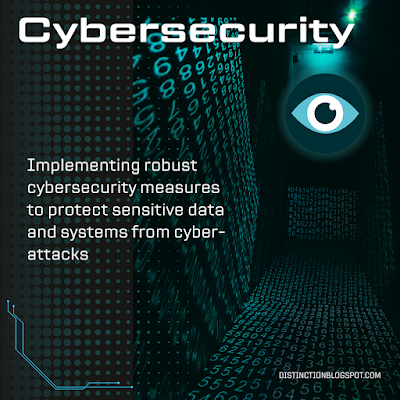MALWARE AND HOW TO PROTECT YOURSELF
MALWARE
Malware: Understanding The Threat And How To Protect Yourself
Malware, short for malicious software, refers to any program or code that is designed to damage, disrupt, or steal information from a computer system without the user's knowledge or consent. Malware is one of the most significant threats to the security and privacy of individuals, businesses, and governments worldwide. In this article, we will discuss the different types of malware, the causes, the potential effects, and how to avoid it.
Types of Malware:
There are various types of malware, each designed to perform specific malicious activities. Some of the most common types of malware include:
- Viruses: These are programs that infect other programs and can replicate themselves, potentially causing damage to files and data.
- Worms: These are self-replicating malware that spread through computer networks, often causing damage to systems and networks.
- Trojans: These are programs that appear to be harmless but contain malicious code that can damage or steal data.
- Ransomware: This is a type of malware that encrypts files and demands payment to restore access to the victim's data.
- Adware: These are programs that display unwanted advertisements on a user's computer, often causing slow performance and reduced functionality.
- Spyware: These are programs that collect information about a user's activities and send it to a third party, often without the user's knowledge or consent.
Causes of Malware:
Malware can be caused by a variety of factors, including:
- Downloading files or software from untrusted sources.
- Visiting malicious websites or clicking on suspicious links.
- Opening attachments from unknown sources.
- Using outdated software or operating systems that are vulnerable to attacks.
- Weak passwords and lack of authentication measures.
- Lack of proper security protocols and software.
List of Things Malware Can Cause:
Malware can have severe consequences for individuals, businesses, and governments. Some of the potential effects of malware include:
- Theft of personal and sensitive information.
- Disruption of computer systems and networks.
- Damage or destruction of files and data.
- Loss of productivity and revenue for businesses.
- Unauthorized access to secure systems and networks.
- Damage to a brand's reputation and customer trust.
How to Avoid Malware:
There are several steps you can take to avoid malware, including:
- Use reputable antivirus software and keep it up to date.
- Avoid downloading files or software from untrusted sources.
- Be cautious of suspicious links and attachments.
- Keep your software and operating systems up to date with the latest security patches.
- Use strong passwords and enable two-factor authentication.
- Regularly back up your important files and data.
In conclusion, malware is a serious threat that can cause significant harm to individuals, businesses, and governments. By understanding the different types of malware, the causes, and the potential effects, you can take steps to protect yourself from this threat. By following best practices, such as using reputable antivirus software and avoiding suspicious links and attachments, you can significantly reduce the risk of malware infecting your computer system.



Comments
Post a Comment